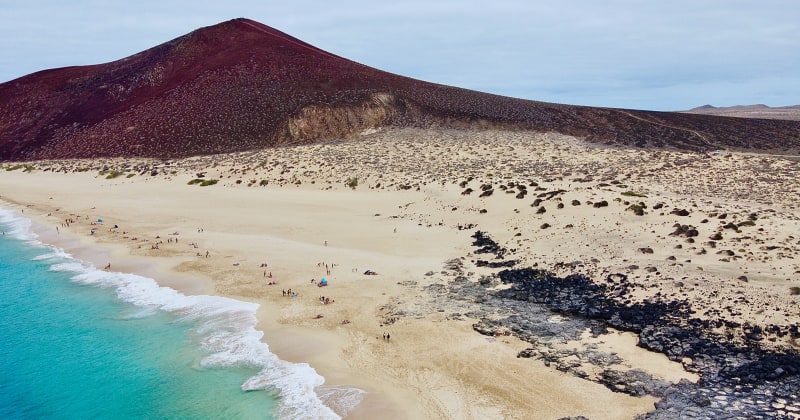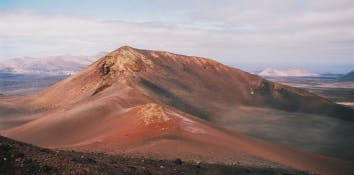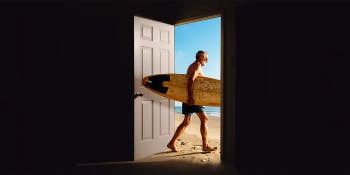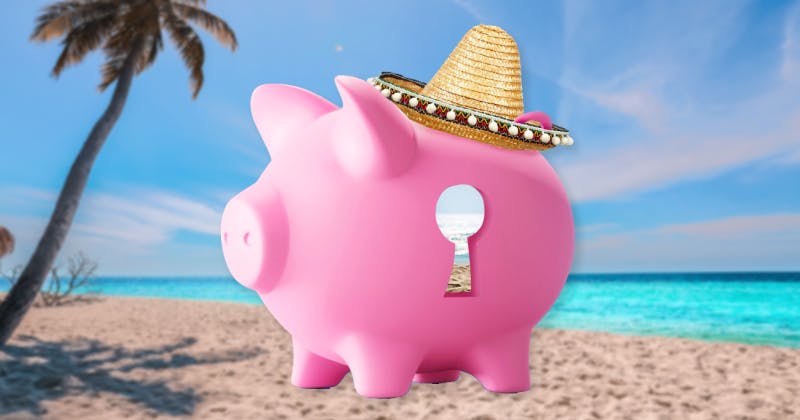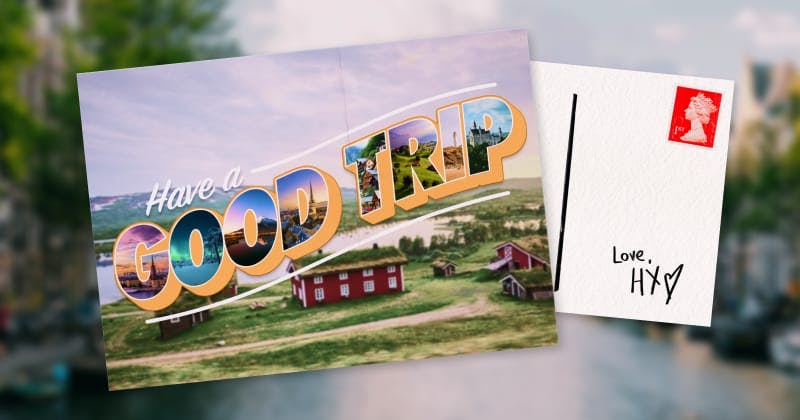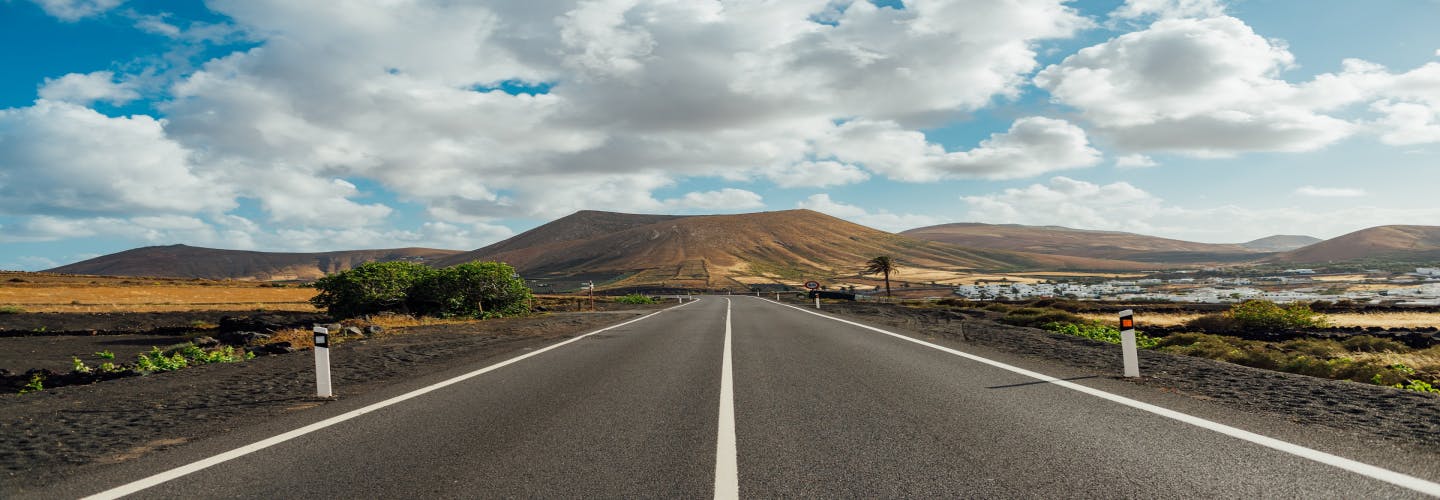
Lanzarote Travel Guide
Welcome to our Lanzarote travel guide - the best place to find out everything you need to know before you travel.
What you'll find in this guide:
Practical Information
What's the weather like?
Getting to Lanzarote
Where to stay
Where to eat
Top things to do
Lanzarote for LGBTQ+ travellers
GMT +1
Euro EUR
Spanish
Type C, E & F
4 hours 15 minutes
Practical Info
Lanzarote is one of the more popular of the Canary Islands, offering stretches of sandy beaches, stunning coastlines and lots of architecture. It has a population of only 148,000 but over a million tourists visit every year.
Often referred to as the 'Islands of Eternal Spring', the ever reliable warm and sunny weather found on the Canary Islands makes it a favourite of our customers throughout the year - and Lanzarote is no different!
Language 101
English will be spoken in varying amounts in many of the resorts and popular attractions but the locals will appreciate visitors trying to speak Spanish.
Here are some helpful Spanish phrases:
Hello - Hola
Goodbye - Adios
How are you? - ¿Qué tal?
Yes - Sí
No - No
What's your name? - ¿Cómo te llamas?
My name is - Me llamo
Please - Por favor
Thank you - Gracias
How much is it? - ¿Cuánto cuesta?
Where is? - ¿Donde esta?
Numbers:
- One - Uno
- Two - Dos
- Three - Tres
- Four - Cuatro
- Five - Cinco
Jabs, visas and other advice
For up-to-date advice on jabs, visas and other foreign advice, we recommend following the government's website.
Emergency numbers
For any emergency, call 112.
What's the weather like in Lanzarote?
Lanzarote has one of the most consistent climates found anywhere in the Canary Islands, with stable temperatures throughout the year averaging 17ºC (63º F) in January/February and 24º C (75º F) in summer time.
Much like in the UK, the highest temperatures are usually found in June, July and August with an abundance of sunshine and beautiful blue skies. But whenever you go, it's a good idea to pack the factor 50.
Getting to Lanzarote
A number of airlines fly direct to Lanzarote, including Wizz Air, EasyJet, Ryanair, TUI, Jet2 and British Airways. The average flight time is around 4 hours 15 minutes and flights start from as little as £17.
Lanzarote is served by Arrecife Airport which is about 5km south-west of the capatial Arrecife. The airport has two terminals - Terminal 1 is for international arrivals and Terminal 2 is for inter-island arrivals.
Getting to your accomodation from Arrecife Airport
Taxi: You can easily pick up a taxi out the front of both terminals on Level 0. It is around 11 minutes by taxi to Arrecife.
Bus: The Line 22 bus will take you from the airport to Arrecife - it costs 1.40EUR, takes around 10 minutes and runs every 25 minutes from 6.55 am to 10.40 pm Monday to Friday.
Car Hire: If you want to explore the island it's a good idea to hire a car for the duration of your stay - this gives you the freedom to explore at your own leisure.
Top
Spain ranks 18th on the Good Trip Index
This score is calculated based on Sustainability, Human Rights, Women's Rights, Press Freedom, Quality of Life, LGBTQI+ Rights and Animal welfare
Find out moreBest places to stay in Lanzarote
Punta Mujeres
Punta Mujeres is a coastal village on the northeast coast of the island, full of small, traditional white buildings.
Historically a fishing village, the small streets and alleyways all seem to lead you to the sea. Mere minutes away from popular attractions like Jameos Del Agua and Cueva de los Verdes - Punta Mujeres is the perfect place to stay if you're looking for a mix of nearby things to do and relaxing isolation.
Puerto Del Carmen
Somewhere not so isolated is Puerto Del Carmen - maybe the best known resort town on the island. Just 10 minutes from the airport, it's a great base to explore the island from.
It has everything you'd expect from a resort town including restaurants, bars, clubs and beaches. There's also a small fishing port called El Varadero where you'll see lots of leisure boats moored up.
Puerto del Carmen stretches for 6km along the coastline, so be sure to check exactly where you're planning on staying to get the most out of your location. But wherever you stay, you're going to have everything you need just a stone's throw away.
La Villa de Teguise
La Villa de Teguise is slightly inland, but still very close to lots of attractions and coastal areas, making it a perfect base if you've hired a car, and want to see as much of the island as possible.
There are few hotels, and not many organised tours stop there which makes for hushed streets and squares. But don't mistake the quiet for isolation - the town hosts the island's biggest street market every Sunday.
Costa Teguise
Just a 15-minute drive towards the sea away from the peaks surrounding Teguise is Lanzarote's third largest resort - Costa Teguise.
It's a resort town in every sense of the word - you're never more than a 10-minute walk away from anything you could need. Costa Teguise is a purpose-built resort town, taking shape in the 1970s as an 'upmarket alternative' to Puerto Del Carmen, which became very popular with German and Scandinavian holidaymakers during the 1980s.
Many excursions depart from Costa Teguise, and it's home to the only water park on the island. The seafront promenade will walk you past all five of the main beaches, and the sunset views here are just as fantastic as Puerto Del Carmen.
TopWhat to eat in Lanzarote
Food in Lanzarote has been shaped by a range of cultural influences including Spanish and South American cuisine. From papas arrugadas (Canarian potatoes) to Sancocho (fish stew) there's plenty to delight your tastebuds. Here is a small selection of our favourite places.
Jameos Del Agua
Who'd have guessed that one of the best places to eat in Lanzarote was underground? Jameos del Agua is a museum, gallery, restaurant and landmark all rolled into one.
The Jameos Del Agua are a collection of caves created by lava, and renovated by artist and architect César Manrique. When you first head into the caves, you'll find the Jameos Del Agua restaurant. With a delicious menu full of traditional Spanish and Canarian cuisine, as well as crowd pleasing dishes like burgers and soups, you'll find something for everyone.
Get your tastebuds excited with local favourites smoked Canarian grilled cheese served with tomato marmalade or 'papas arrugadas de Lanzarote con mojo' - salted wrinkly potatoes served with a Canarian spicy sauce - a perfect alternative to chips!
El Sibarita
There's definitely a joy to be found in a warm, local restaurants like El Sibarita, in Caleta De Famara. The town is a watersport paradise attracting surfers, windsurfers and kitesurfers alike.
El Sibarita is proudly a small business that sources delicious local ingredients for their home-cooked food. They specialise in vegan, vegetarian and asian dishes, but chicken and/or prawns can be added to any dish. Big, mouth-watering rice bowls and delicious veggie burgers await.
Mirador del Río
Ok, so this one isn't really about the food. You'll get a good lunch at Mirador del Río but the main reason you should eat here is for the view. Mirador del Rio is a lookout point set on the northernmost point of the island, and it's 400m high.
Two enormous glass windows give you incredible views out of the sea and the nearby island of La Graciosa, home to only around 700 people.
El Diablo
Lanzarote has a couple of truly unique places to eat, and one of these is El Diablo in Timanfaya National Park. A uniquely shaped building on a peak in the middle of the Fire Mountains, El Diablo has panoramic floor to ceiling windows, giving you 360 degree views of the landscape around you. The park is famous for looking eerily like you're on another planet.
Not only that but the restaurant cooks using volcanic heat from below the ground. As the theatrical displays for visitors outside will show you, there's intense volcanic heat just below ground level. Using a huge grilling shelf placed on top of a deep shaft into the ground below, they channel that volcanic heat to flame grill the food for the restaurant.
Canarian flavours star in the menu from beginning to end. To start you can enjoy local cheeses, Iberian ham or garlic prawns. Meat dishes are El Diablo's speciality - there's a choice of chicken, beef or lamb.
Make sure you leave enough space for dessert where you can choose between the 'Explosive Lanzarote volcano over brownie soil' or the torched creme brulee.
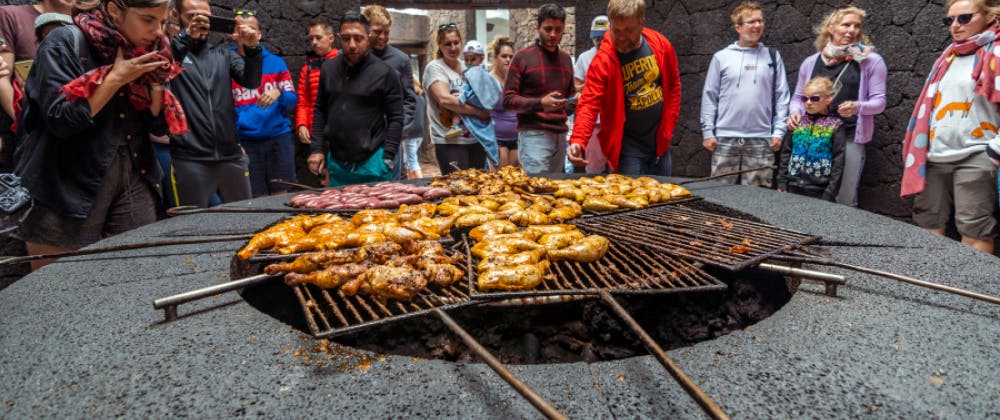
Blooming Cactus
In the big and bustling resort town of Puerto del Carmen, you'll find all manner of lively Irish bars and crowd-pleasing restaurants. A walk around the dock, El Varadero, is a perfect way to spend the evening.
But look for the smaller, rustic places and you'll find Blooming Cactus - an independent vegetarian restaurant a little off the beaten track. With a fantastic greek mezze themed menu it might not sound very traditional to Lanzarote, you can't have tapas all week! If you want to try something a little different while you're away then Blooming Cactus is the ideal place.
The Cactus Garden
Another spot that makes for a fantastic place to grab something to eat is the Jardin de Cactus, or the Cactus Garden.
The cafe sits on one of the higher levels overlooking the garden and is shaped like a giant succulent bowl. The shape protects you from the wind, and they serve a pretty unique dish - a cactus burger! This vegetarian burger is made of a blend of different ingredients, including cactus, and has a fantastic looking colour.
The cafe also offers a selection of tapas and light snacks. Local cheeses, cold meats and Canarian potatoes are on offer alongside a wide selection of drinks to compliment your food, including a Canarian cactus liquor.
TopYou can find more great video content on our YouTube channel
Holiday Extras Travel Guides
Things to do in Lanzarote
Timanfaya National Park
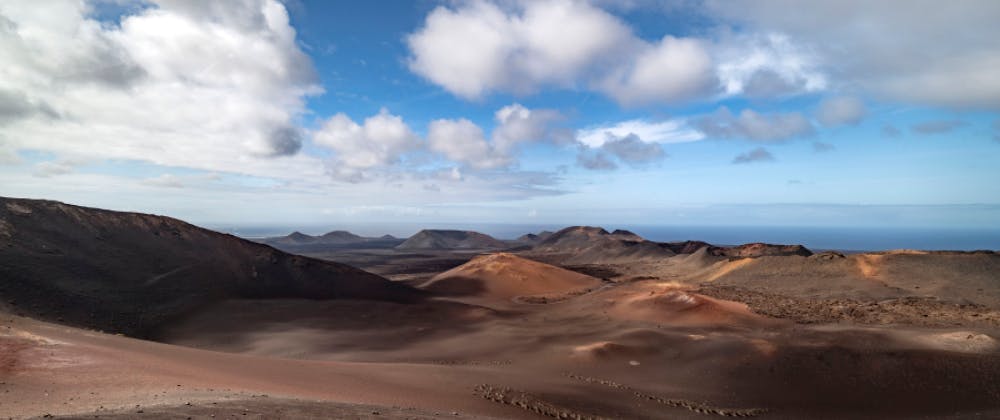
Arguably the most famous of all places to visit on Lanzarote is Timanfaya National Park. It's a huge protected reserve set in a volcanic mountain range, made up entirely of volcanic soil.
Nearly 300 years ago the volcanoes in this region began a 6-year eruption making the surrounding landscape completely unrecognisable. What was once green and fertile was transformed into an almost lifeless region of craters, boulders and lava fields, all with a startling red tinge and the occasional bellow of steam.
The volcanic activity continues today just beneath your feet - in fact, you'll be shown that when you visit. Water is poured into holes in the ground that go just 13 meters below where it's hot enough to make the water boil instantly, resulting in very loud steam geysers!
They also use this natural volcanic heat to grill the food in the restaurant, El Diablo. Where else can you say you've had lunch cooked by a volcano!
If you'd rather get off the coach you can also book a guided hike through some of its more rugged terrain, including up to the grumbling peak of the volcano. Keep your eyes peeled for the statue of "El Diablo" by local artist César Manrique while you're there too.
Just make sure you book any tours in advance, as access to the park is regulated to protect the delicate flora and wildlife.
El Golfo
El Golfo is a small seaside village on the outskirts of Timanfaya national park, but the two main reasons people visit are found just outside the village.
Looking down from the cliffside pathway, you'll pass a beautiful black sand beach lined with volcanic rocks. The rocks act as a breakwater, and the tall white waves crashing against them really are a sight to behold.
Keep following the path round and you'll find a great view of the famous El Lago Verde - The Green Lake. It's teeming with volcanic minerals and micro-organisms which give it its vivid green colour.
Jameos Del Agua
Jameos Del Agua was the first tourist destination created by Lanzarote's famous César Manrique. It's a real cross section of art, design and nature with an auditorium, gardens and a fantastic restaurant.
A staircase follows the slope of the lava tunnel down to a pool home of the fascinating blind lobster - an endemic local species.
César Manrique wanted to give visitors somewhere to contemplate a natural attraction, formed almost entirely without human intervention. The gardens in the open-air section of the caves were designed with this in mind too.
La Villa de Teguise
If you're looking for something authentic look no further than La Villa de Teguise - a historic village in the eastern part of the island. Dating back to 1402, it's the oldest Spanish settlement in the whole of the Canaries, and was the capital of the island for 450 years until Arrecife took the title in 1852.
The main town of Teguise is known as La Villa. It's the perfect place to slow down, enjoy some peace and get a feel for the real Lanzarote. There are few hotels, and not many organised tours stop here which makes for hushed streets and squares that perfectly preserve the past.
Expect cobbled streets, small white buildings and fruit trees - the perfect example of a Spanish village.
Santa Bárbara Castle
The Fortress of Santa Bárbara is the island's oldest castle, and watches over the village of Teguise below. As one of the tallest peaks in the area, the castle watches over most of the eastern side of the island. The view is incredible, and the crater of the extinct volcano, Mount Guanapay, will remind you how volatile this island's geography once was.
Inside the castle it's been given new life as a pirate museum. The position of the Canary Islands made them a popular supply stop for ships heading to and from the Americas, which in turn made it an attractive hunting ground for pirates for a few hundred years.
The museum leads you onto the roof of the castle, where you'll see why it made such a great lookout for the village below. Because it's so high up it can get a little windy so hold on tight!
20 reasons to visit Lanzarote
Lanzarote is much more than your average sun, sea and sand holiday destination. Read our 20 reasons to give the popular Canary island a go this year.
Discover more...Mirador del Río
Designed by César Manrique, Mirador del Río is the island's most famous viewpoint. Camouflaged with a coating of volcanic rock, this iconic landmark almost vanishes into the cliff face.
Two glass windows on the front of the building are nicknamed the eyes of the Mirador and the view from the top is stunning. The two panoramic windows make up an entire side of the lookout, which is built in the remains of an ancient military base. César Manrique's style is everywhere, and the interior looks more like a lava bubble than a military bunker.
Grab a light lunch in the café and head up to the rooftop terrace. The view is even better that the balcony below and you can look out in all directions, and really soak up the sea air while you enjoy the views.
Punta Mujeres
The gorgeous village of Punta Mujeres is often overlooked by tourists as they pass it on their way to bigger attractions like Jameos del Agua, just a few minutes away.
A traditional fishing village, Punta Mujeres translates as 'Women's Point', and is so called because of the women who would wait there for their husbands to return from fishing voyages.
The buildings have pretty terraces and balconies looking out to sea to make the most of the beautiful views. But Punta Mujeres' biggest draw is the natural bathing pools.
Filled with seawater and protected by huge breakwaters of naturally occurring rocks, swim in these pools at the right time of day and you'll get to experience the waves smashing against these rocks making huge plumes of spray.
Jardín de Cactus
Jardín de Cactus or the Cactus Garden, is just ten minutes drive away from Punta Mujeres - five minutes along the coast, and into the mountains.
A large, traditional windmill is the highest point in the garden, and it's visible from the road. The entrance of the garden is obscured, and although the landscape surrounding it is pretty dry, passing through the entrance is like passing into another world.
The garden has cacti of all kinds of incredible shapes and sizes. Some cacti are trees, some are bushes, some have branches and some are balls. The shape of the garden does an incredible job of hiding the beauty until you pass right through the entrance.
The Cactus Garden was Lanzarote's last gift from César Manrique. He died in 1992, at 72 years old, just a year after the Cactus Garden was completed.
César Manrique Foundation
César Manrique's name is everywhere. The contributions that he made to both art and tourism are inescapable when you're exploring the island. Shortly after Manrique died in 1992, his home was opened to the public under the name Fundacion César Manrique, or the César Manrique foundation. Visitors are able to experience where he lived, learn about the man and how he shaped the history of the island.
Manrique's activism criticised the tourism boom of the 70's and 80's, challenging the get-rich-quick attitude of hotel developers building as quickly as possible to grab their share of this new business. He's a big reason why you won't see many high rise hotels on the island. His vocal protests helped elevate him as a hero for Lanzarote, and his influence forced the tourism industry to think more sustainably.
Lanzarote for LGBTQ+ travellers
Although Gran Canaria is the more famous Canary Island among the LGBTQ+ community, Lanzarote is equally friendly and laid back in their attitudes. If a venue isn't exclusively for LGBTQ+ people you'll still find yourself welcome wherever you choose to party!
Top





